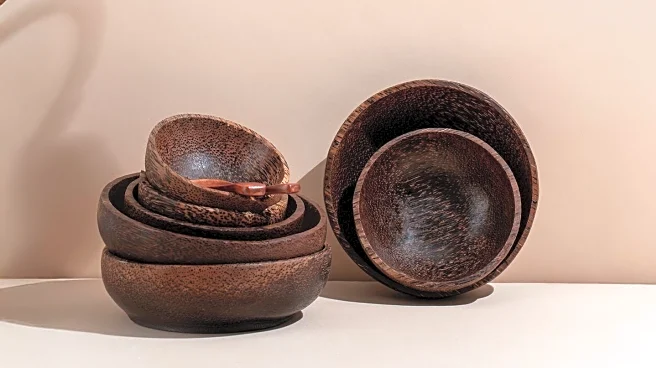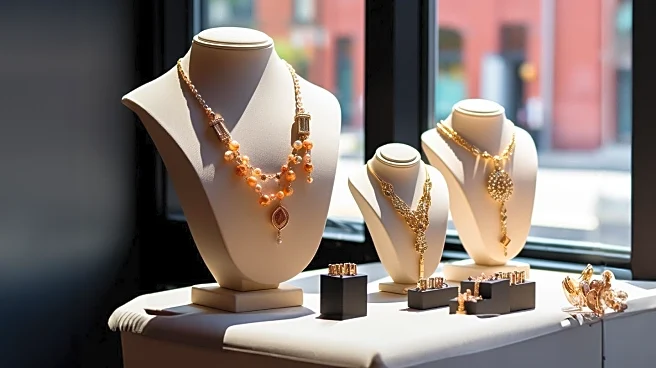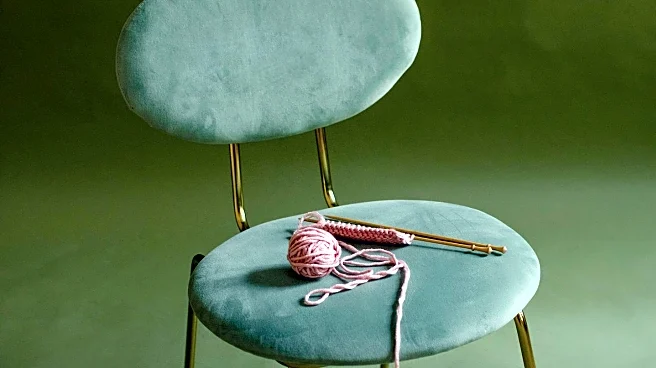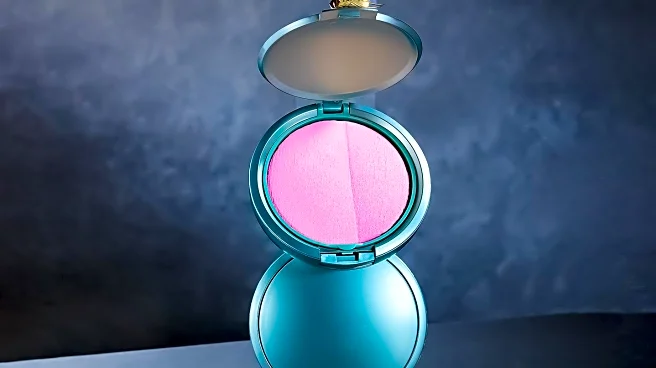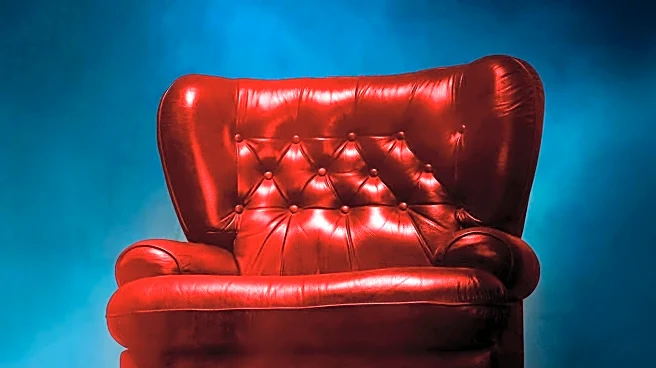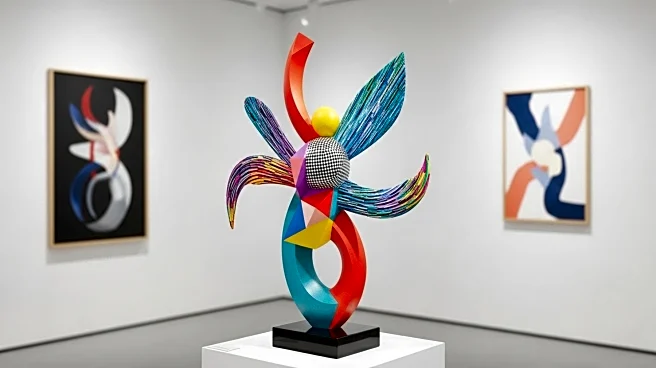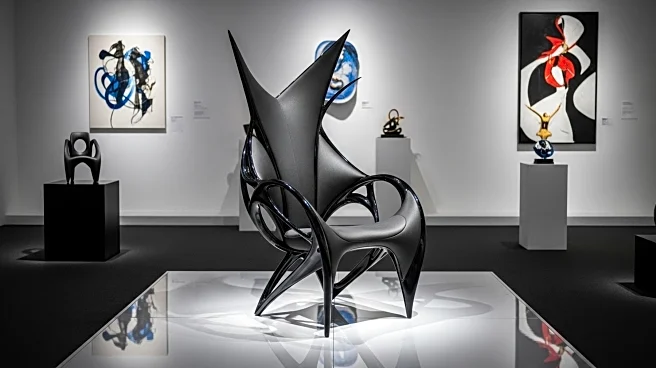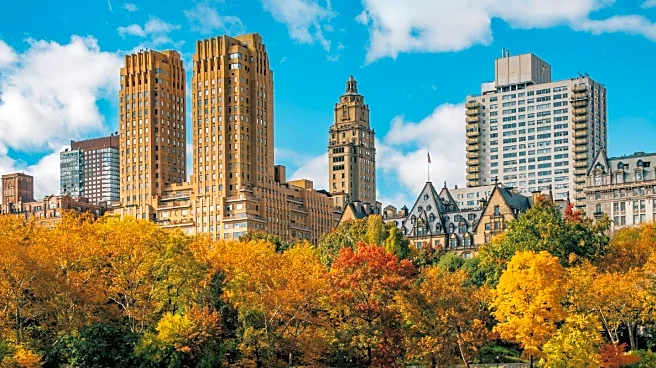What's Happening?
The Collectible Design Fair, originating from Brussels, has returned to New York for its second edition, showcasing a diverse array of innovative designs. The event spans over 30,000 square feet at the WSA Building, featuring 123 exhibitors from 22 countries. This year's fair emphasizes pieces that blend playfulness with market viability, including bespoke commissions and immersive scenography. Notable exhibits include Lionel Jadot's creations using salvaged materials, Studio Henri Judin's vibrant 'Drag Queen's Boudoir,' and Julio Torres' debut furniture collection. The fair also highlights high-tech designs like Morphus' vibrating recliner and Tokio's modular UEBU lights.
Why It's Important?
The Collectible Design Fair serves as a platform for designers to showcase innovative and sustainable creations, influencing trends in the design industry. By featuring works that merge aesthetics with functionality, the fair encourages a shift towards more sustainable and thoughtful design practices. This event not only provides exposure for emerging designers but also fosters international collaboration, potentially impacting global design standards. The emphasis on sustainability and creativity may inspire changes in consumer preferences, driving demand for eco-friendly and unique design solutions.
What's Next?
As the fair continues through September 7, it is expected to attract significant attention from industry professionals and design enthusiasts. The event may lead to new collaborations and opportunities for designers, influencing future design trends. Stakeholders in the design industry, including manufacturers and retailers, may respond by incorporating more sustainable and innovative practices into their operations. The fair's success could also encourage similar events, further promoting global exchange and innovation in design.
Beyond the Headlines
The Collectible Design Fair highlights the evolving relationship between design and sustainability, reflecting broader cultural shifts towards environmental consciousness. By showcasing works that utilize recycled materials and emphasize organic forms, the fair contributes to a growing dialogue on the role of design in addressing environmental challenges. This focus on sustainability may influence long-term industry practices, encouraging designers to prioritize eco-friendly materials and processes.
